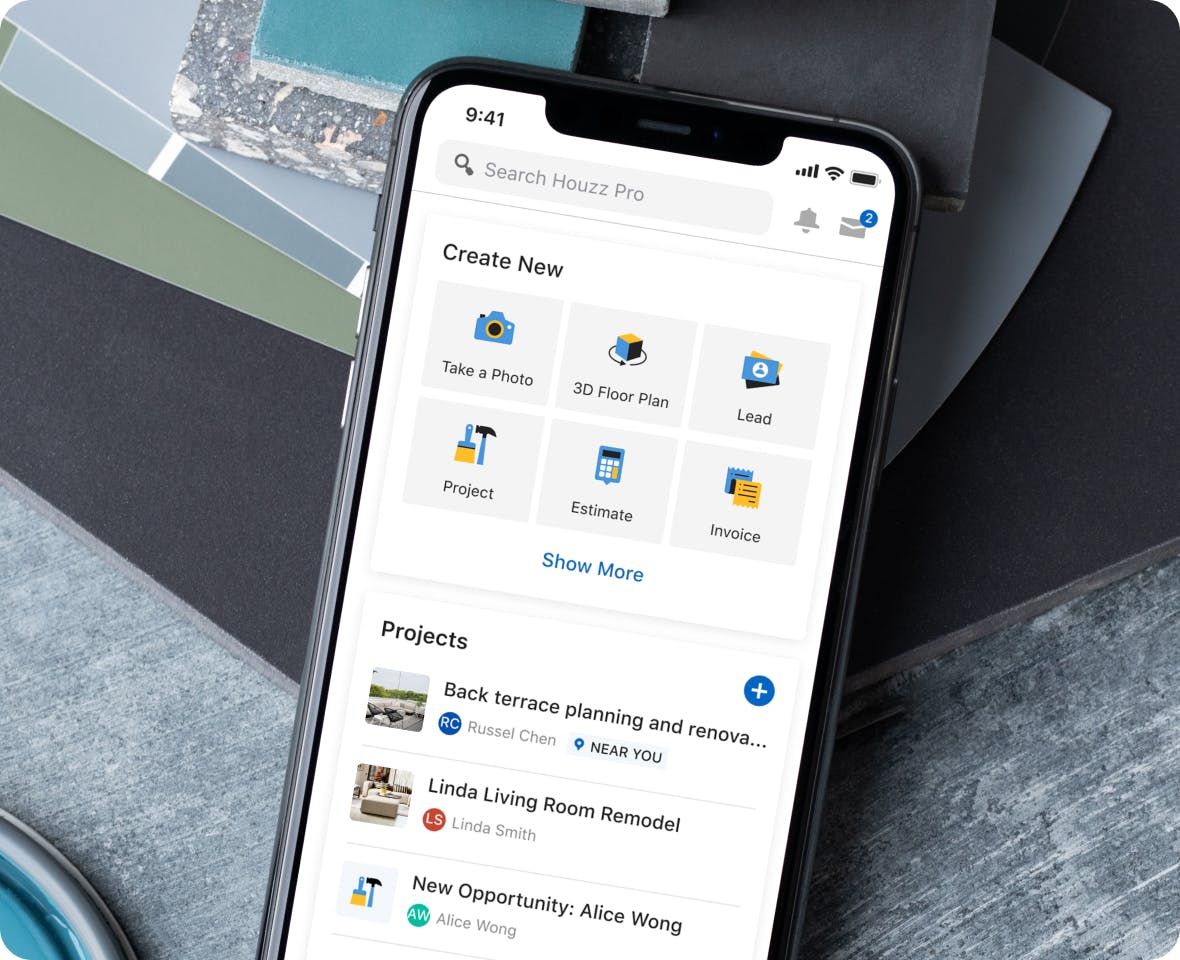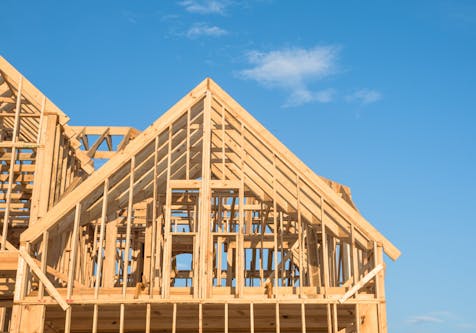Growth Advice From Case/Design Remodeling Veteran Mark Richardson
The remodeling industry leader, author and advisor discusses scaling up, boosting profits and using technology to manage growth.
Construction sites are in Mark Richardson’s background, but education has taken over the foreground. The president and co-chairman of Case Design/Remodeling for 30 years, Richardson hung up his hard hat to become a national speaker, an author, an adviser on business advancement and much more. Here he distills offers insights on topics including handling high growth, building overall business health and adopting technology.

Have an Idea Where You’re Headed
High demand has taken many design and construction pros by surprise, but you don’t have to just go where the tide takes you. It’s better to figure out what and where you want your business to be and chart a course to get there, Richardson believes. “What’s your endgame?” he says. “I think you at least need to know where you’re heading. Once you’ve established where you’re heading, you need to take a little bit of inventory of what you’ve got…. Be brutally honest with yourself and look at the overall fitness of your business.” His book How Fit Is Your Business? offers criteria across 10 categories, including processes and systems, reputation, team and profitability.
“Once you have at least some semblance of what I would consider a somewhat healthy and fit foundation — not even the end game — then I think the question is, ‘Okay, how do I go about creating a plan and assembling a team to be able to launch this and be able to grow it?’” Richardson adds.
Turn Profits Into Investments
No one knows the exact expiration date of the current boom, which is why it’s essential for long-term business growth to manage any profits wisely. And that means getting specific. “I’m a huge believer in that profitability should be [as] predicted, as opposed to ‘high’ or ‘low,’” Richardson says. “First and foremost, you should be able to predict the right level of profitability. Second, you’ve got to keep it in balance.” What does balanced profitability look like? “Are you making sure it’s not only healthy but investing in the future?” Richardson says. “Your profit can drop dramatically if you’re investing in a lot of human capital…but you might be positioning yourself for the next year or the year after.”
And investing in a talented team to position yourself well is essential, Richardson believes: “This is a team sport, and it’s somewhat analogous to a rowing team. You want to get as close as you can to everybody rowing together, and everybody rowing together at a similar cadence. To be able to get there, you need to create some sort of way to look at the world, not just rules of the game that tell everybody what they need to do at any moment.” How to create that shared vision? “I ended up developing 12 business themes to live by,” he says. “Number one, they were my beliefs and what I felt the company should do, but more importantly, they were a way to create alignment. A way that we could row together.” He advises other business owners to develop their own themes and get everyone on the team aligned. “Then, once you’ve got them aligned,” he says, “you can take off like a rocket ship and do some amazing things.”
While we’re on the subject of teams, Richardson encourages everyone to “wipe out of your vocabulary the word ‘vendor.’ ‘Vendor’ is not a nice word. All you need to do is change it slightly to ‘strategic alliance,’” he says. “Now all of a sudden you’re looking at win-win, not win-loss.… If the alliances are always not just thinking about themselves but ‘How can I help the other take their game to the next level?’ the likelihood of success is so much greater.” Strategic alliances can be technology partners, manufacturers, contractors and more; the idea is to “deputize alliances to be part of what you do,” he says.
Set the Stage for Sustainability
Growth without sustainability equals a flash in the pan, which is why Richardson recommends taking a close look at your business’ products and services as well as its positioning to maintain success over the long haul. “Can you control your own destiny, or is it controlled by headwinds and tailwinds in the market?” he says. For example, with Case Design/Remodeling, “we had a very large design-build business, and we decided that we wanted to start a service business, handyman services, that we added to the core design-build business. Well, when we launched that after literally our business had been around for 25, 30 years, we had a client base of about 2,500. Within about five years, with the service division we had a client base of 25,000. You can imagine for a minute, if I’ve got 25,000 paying clients, I am better positioned.”
Another aspect of creating sustainability through positioning is making sure you’re focusing beyond the short term and creating goals for the medium term and long term as well. “Those businesses that are positioned very well, they are…spending easily 10% of their time on the long-term — long-term being two, three, four years and out. They’re spending another 20% at least on the medium term, three months to 12 months out. And then they’re spending the balance on maybe the short term. Those businesses that are not very well positioned, they’re spending almost all their time on the short term.”

Tap Into Technology
“It’s almost like saying, ‘You need to wear shoes when you’re going outside,’” Richardson says of adopting technology for business processes. “It’s basic. I truly believe that technology in many ways is the glue that allows you to hold the parts and pieces of all the good things that you do together…and now I’m seeing that technology is really becoming the expectation of the client more than just a way to differentiate yourself.” He notes that Houzz Pro in particular has “an interesting menu of what those technologies are that literally get integrated into the business,” boosting efficiency and giving designers and remodelers a competitive advantage.
And of course, anything that eases personal stress on the job is an asset; however, Richardson notes the difference between tearing-hair-out stress and healthy business stress. “I find it analogous to a rubber band. If you take a rubber band and it’s limp, there’s no stress and it doesn’t do you any good. You take the same rubber band and stretch it so tightly that it snaps, it doesn’t do any good,” he says. “So you have to have the right level of stress in the business…you’ve got to have enough aggressiveness to it, but you’ve got to look at history and what’s realistic.”
Along with having a plan, good team members and positioning, and technological resources, Richardson stresses the importance of commitment, focus and capital investment, whether that capital is money or time. “When I watch businesses that struggle or fail, it usually is a collection or one of those areas in which they fall short,” he says. Moreover, he advises business owners to “fire themselves.” Yes, you heard right.
“The quickest way you can grow the business is if you have someone pushing you out of your seat, so you can move into that next seat,” he says. “Most owners are constantly going backward holding onto what they’ve done in the past as opposed to moving forward.”
For more of Mark Richardson’s insights to help you move forward, visit his website, Remodeling Mastery.

Want advice delivered to your inbox?
Unlock industry insights and updates for contractors and design pros
By signing up, I agree to the Houzz Terms of Use and Privacy Policy and that Houzz may use my information to contact me about relevant content, products, and services.











Join the conversation by commenting or asking a question below. The Houzz team reads every single comment, and we’ll get back to you by email if you need us!